- News
- Reviews
- Bikes
- Components
- Bar tape & grips
- Bottom brackets
- Brake & gear cables
- Brake & STI levers
- Brake pads & spares
- Brakes
- Cassettes & freewheels
- Chains
- Chainsets & chainrings
- Derailleurs - front
- Derailleurs - rear
- Forks
- Gear levers & shifters
- Groupsets
- Handlebars & extensions
- Headsets
- Hubs
- Inner tubes
- Pedals
- Quick releases & skewers
- Saddles
- Seatposts
- Stems
- Wheels
- Tyres
- Tubeless valves
- Accessories
- Accessories - misc
- Computer mounts
- Bags
- Bar ends
- Bike bags & cases
- Bottle cages
- Bottles
- Cameras
- Car racks
- Child seats
- Computers
- Glasses
- GPS units
- Helmets
- Lights - front
- Lights - rear
- Lights - sets
- Locks
- Mirrors
- Mudguards
- Racks
- Pumps & CO2 inflators
- Puncture kits
- Reflectives
- Smart watches
- Stands and racks
- Trailers
- Clothing
- Health, fitness and nutrition
- Tools and workshop
- Miscellaneous
- Buyers Guides
- Features
- Forum
- Recommends
- Podcast
BUYER'S GUIDE
 Your complete guide to SRAM road bike groupsets May 2024
Your complete guide to SRAM road bike groupsets May 2024Your complete guide to SRAM road bike groupsets — explore the range and choose the best SRAM groupset for you
Component manufacturer SRAM makes a range of groupsets for road bikes and mountain bikes. In this guide to SRAM's road bike groupsets we'll walk you through your options from SRAM's innovative wireless electronic shifting systems to the entry-level Apex groupset.
The American-based component maker was founded in 1987 and SRAM's first product was Grip Shift, a twist-grip shifter for road and triathlon bikes that was subsequently adapted for mountain bikes.
Of the three main road bike groupset manufacturers – Shimano, SRAM and Campagnolo – SRAM is the 'newcomer' but it has an extensive range and a big slice of the market.
SRAM essentially has four road groupsets, and the good news is that you should be able to get a setup that suits both the type of riding you do and your budget. All four have hydraulic disc brakes as options, and there are still some mechanical rim brakes to be found in the range.
From low to high in terms of price, Apex is its entry-level groupset, followed by Rival, Force and Red. Red is SRAM's lightest and most expensive groupset – the one used by SRAM’s professional road racers. Though it came to the party much later than Shimano's Di2, SRAM has pioneered electronic shifting since SRAM Red eTap was released in the summer 2015.
However, it’s more complicated than that – it always is! SRAM's mechanical groupsets are still 11-speed, whilst their electronic groupsets - Apex, Rival, Force and Red - are available in 12-speed wireless electronic versions. Below is SRAM's groupset ranking:
SRAM wireless groupsets:
SRAM mechanical groupsets:
Discontinued (but still widely available):
- Force 1
- Rival 1
- Apex 1
- Red 22
- Force 22
- Rival 22
SRAM has focused on single-chainring '1X' (pronounced one by) systems, initially for mountain bikes, then for cyclocross, gravel bikes and road bikes. All versions of SRAM are now available in 1X configurations (with a single chainring instead of a double).
Here are all your SRAM groupset options for drop bar bikes...
SRAM Electronic groupsets
SRAM Red AXS
Read our review of SRAM Red AXS
In 2019, SRAM updated its top-tier groupset Red eTap AXS, replacing the previous SRAM Red eTap. In 2024, SRAM released Red AXS which replaces SRAM Red eTap AXS.
SRAM Red AXS is the third incarnation of SRAM's wireless electronic groupset. Shifting is actuated by switches on the brake levers, which send a signal to the derailleurs to do their thing.
Clicking on the right-hand button moves the rear derailleur to smaller sprockets, while a click on the left-hand button takes you to larger sprockets. Clicking both at the same time shifts the front derailleur.
SRAM has also introduced 'Bonus Buttons' on the side of the hoods for the first time, allowing you to shift or to control ANT+ accessories.
Red AXS is a 12-speed groupset, with a 10-tooth smallest sprocket on each of the four available cassettes. Those cassettes will only fit on wheels with SRAM's XDr freehub body, which is 1.85mm wider than the mountain bike XD body so that the chain clears the spokes on the largest sprocket.
You can choose from 10-28, 10-30, 10-33, and 10-36 cassettes and there are double- and single-chainring chainsets. Your double-clanger options are 46/33, 48/35, 50/37, (the front derailleur is compatible with 52/39T, 54/41T, and 56/43T aftermarket chainrings too). If you’d prefer a 1x system, cranksets with 48T and 50T chainrings are available.
The chainsets are available with an optional power meter. Controversially, in most versions, it is built into the chainrings, so when the big ring wears out, you'll have to replace the power meter too.
SRAM says that this makes for a lighter, stiffer crank-based power meter.
One rear mech rules them all, for the road at least. It works with all four cassette options and single or double chainrings.
There is an internal Orbit chain management with fluid damper which, SRAM says, makes it quieter, simpler and more efficient.
Red AXS is customisable via a smartphone app that communicates with the system, meaning you can set it up however you like. Whether that's switching the way the shifting works so a right-hand tap yields lower gears rather than high or getting the system to take care of shifting the front mech for you so you only have to tap one button at a time... you can do them both.
The app also monitors battery level and updates will be able to detect chain wear and tell you how many shifts the system has executed.
The chain is dubbed Flattop because the outer edges of the links are flat. SRAM’s previous Red chain used hollow pins and now it has gone full drillium with cutouts in both the outer and inner plates.
Buying Red AXS
Groupset pricing varies based 2x or 1x drivetrain selection, cassette size and aero or spider-mounted 1x chainring type selection where applicable.
Configurations
- double chainset/disc brakes (+ optional power meter)
- single chainset/disc brakes (+ optional power meter)
It's also still more common to be offered the derailleurs, brake levers and brakes as a set, then add your choice of chainset, sprockets and so on.
You'll also need wheels, a new rear wheel with an XDr freehub body or to replace the freehub body on your existing wheels with an XDr body.
A complete 2x groupset with disc brakes includes:
- Sram Red Chainset
- Sram Red XG-1290 Cassette
- Sram Red Chain
- Sram Red AXS HRD Shift-Brake-System left front/right rear with Flat Mount calipers - 2x12 Speed
- Sram Red AXS Rear derailleur - 12 Speed
- Sram Red AXS Front derailleur - 2x12 Speed
- 2 x Sram AXS Batteries
- 1 x Sram Paceline X Rotor - 140mm
- 1 x Sram Paceline X Rotor - 160mm
- Sram AXS charger
SRAM Force AXS
Read our review of the SRAM Force AXS groupset
SRAM introduced an electronic, wireless and 12-speed version of its second-tier Force groupset in its last round of significant updates in 2019/20, and in 2023 Force eTap AXS was updated again.
After previously addressing issues like the lack of customisation, migrating 12-speed technology from mountain bikes and coming up with a new approach to road bike gearing to develop a Force version of Red eTap, making it far more than just a heavier version of SRAM Red, what's new this time around? Well, the performance appears to be even closer to Red than ever, and the groupset is also a bit lighter than the outgoing version with new integrated chainrings and new power meter options.
The shifter hoods have also got smaller and neater on this update, although pretty much all the braking components are the same as previous-gen SRAM force.
There are a number of cassette sizes with a 10-tooth small cog as before, and there is now a 50/37 Force chainset alongside the 48/35 and 46/33 options. You can choose from 1x or 2x set-ups, and the double chainring cranksets on Force are now integrated. SRAM says this makes front mech shifting faster.
There is new Force power meter crankset options as well, with the new Force AXS Power Meter Crankset (shown above) offering a power meter integrated into the chainrings rather than the spindle. There are also spindle-based power meters in the Force range, but these measure your left-side power only and use that to calculate total watts.
As before, there is also SRAM Force Wide options if you want lower gears and an even wider spread of gearing. The Force Crankset is available in a 43/30T Wide version with a longer-than-normal spindle for both road and mountain bike width frame bottom bracket standards. This has non-integrated chainrings and is used with the SRAM Force AXS Wide Front Derailleur.
“Our 43/30T chainring combo combined with a wide chainline increases tyre clearance while providing ideal gearing for venturing off-road,” says SRAM.
Buying Force eTap AXS
Configurations
- double chainset/disc brakes (+ optional power meter)
- double chainset/rim brakes (+ optional power meter)
- single chainset/disc brakes (+ optional power meter)
As with Red eTap AXS you're going to need a whole groupset if you want to switch from whatever you're riding now, plus a new rear wheel with the XDr driver to accommodate SRAM's 10-tooth stop sprocket. There's no upgrade path from first-generation Red eTap.
A complete 2x groupset with disc brakes includes:
- 1x SRAM Force eTap AXS complete front brake/shifter lever with flat mount caliper
- 1x SRAM Force eTap AXS complete rear brake/shifter lever with flat mount caliper
- 2x SRAM Centerline XR disc rotors 160mm, Centrelock brake rotor mount
- 1x SRAM Force eTap Rear Derailleur,
- 1 x SRAM Force etap Front Derailleur, Braze-on
- 2x SRAM eTap batteries
- 1x SRAM Charger and Cord
- 1x SRAM Force 12 Speed cassette
- 1 x SRAM Force 12 Speed Flattop Chain
- 1 x SRAM Force Chainset
A Cannondale SuperSix EVO 4 Carbon 1 with new SRAM Force has an RRP of £6,750, while the Liv EnviLiv Advanced Pro AXS has an RRP of £6,999 at the time of writing.
SRAM Rival eTap AXS
Read our review: SRAM Rival eTap AXS
Last to turn electric was SRAM's third-tier groupset launching in April 2021. SRAM Rival eTap AXS makes electronic shifting available to more riders than ever before.
Rival eTap AXS is a 12-speed system, like Red and Force and is also available in 1x and 2x chainring options.
There is one derailleur option: 36t cog max derailleur that works with 10-28, 10-30, 10-33, and 10-36 cassettes. There is the option of a Quarq power meter inside a DUB crank spindle.
Like Force eTap AXS, there is a wide crankset option with 43/30T chainrings for bikes with up to 700x45c or 27.5x2.1" tyres.
Buying Rival eTap AXS
Configurations
- double chainset/disc brakes (+ optional power meter)
- double chainset/rim brakes (+ optional power meter)
- single chainset/disc brakes (+ optional power meter)
A complete 2x groupset with disc brakes includes:
- SRAM Rival eTap AXS HRD shifters
- SRAM Rival Flat Mount calipers
- SRAM Rival eTap AXS medium cage rear derailleur, including battery
- SRAM Rival eTap AXS front derailleur, including battery
- SRAM Rival AXS DUB Power Meter chainset
- SRAM XG-1250 12-speed 10-36t cassette
- SRAM Rival AXS 120 Links with PowerLink 12-speed chain
- SRAM 160mm Paceline Center Lock rotors
- SRAM AXS charger and cord
A Specialized Tarmac SL7 Comp with Rival eTap AXS is around £5,500 and a Trek Domane SL 6 eTap Gen 3 with Rival eTap AXS is around £4,300.
SRAM Apex XPLR AXS
Read our review: SRAM Apex XPLR AXS
SRAM Apex XPLR AXS is the brand's fourth-tier electronic groupset but it offers performance levels of its more premium siblings with similar aesthetics to SRAM Rival. Apex XPLR AXS is a 1x specific groupset for road or off-road riding.
The Apex AXS range is available in two configurations – Eagle or XPLR. They share the same Apex 1 Wide crankset and drop-bar control layout, but which one you choose will come down to the riding and terrain you most prefer. The Apex XPLR AXS suits more rolling topography, while Apex Eagle AXS – which can accommodate a 10-52T cassette – will suit those who ride more technical routes with steeper climbs and lots of singletrack.
The XPLR rear derailleur is a dedicated 1x specific unit designed for use with XPLR 10-44T or 11-44T cassettes. The derailleur doesn't feature a cage lock but does employ a spring-loaded clutch for secure chain management over rough and rocky terrain.
The 1x chainrings are made with carbon fibre arms and are available in sizes from 38-46T. Cranks can be had in sizes ranging from 160-175mm and are manufactured from aluminium.
The chainrings feature X-SYNC narrow-wide technology which helps to keep your chain where it needs to be, according to the brand.
Buying Apex XPLR AXS
Configurations
- single chainset/disc brakes (+ optional power meter)
A complete 1x groupset with disc brakes includes:
- SRAM Apex AXS HRD Shift-Brake-System with Flat Mount calipers
- SRAM Apex XPLR AXS rear derailleur
- SRAM PG-1231 12-speed cassette
- SRAM Apex 12-speed Flattop chain
- SRAM 160mm Paceline Center Lock rotors
- SRAM AXS charger and cord
A Cervélo Aspero with Apex XPLR AXS is around £4,200 and a Cannondale Topstone Carbon is around £3,750.
SRAM mechanical groupsets
SRAM Apex XPLR mechanical
SRAM's Apex XPLR is also available as a mechanical groupset with SRAM's cable-actuated DoubleTap shifting technology.
Apex XPLR mechanical is a 1x12 groupset designed for use with 10-44T or 11-44T cassette options. Like Apex XPLR AXS, direct mount 1x chainrings are available in sizes 38-46T. Cranks can be had in sizes ranging from 160-175mm and are manufactured from aluminium.
Buying Apex XPLR mechanical
Configurations
single chainset/disc brakes (+ optional power meter)
A complete 1x groupset with disc brakes includes:
- SRAM Apex Shift-Brake-System with Flat Mount calipers
- SRAM Apex XPLR rear derailleur
- SRAM PG-1231 12-speed cassette
- SRAM Apex 12-speed Flattop chain
- SRAM 160mm Paceline Center Lock rotors
Discontinued (but still available if you look around)...
SRAM Force 1, Rival 1, Apex 1, Apex (10-speed), Red 22, Force 22 and Rival 22 are all previous-generation mechanical SRAM groupsets that are no longer available as complete groupsets. However, SRAM retailers may still be able to access individual parts such as rear derailleurs and shifters, and you can find plenty of these parts at smaller bike retailers and on eBay.
For more info go to www.sram.com
Explore the complete archive of reviews of groupsets on road.cc
About road.cc Buyer's Guides
The aim of road.cc buyer's guides is to give you the most, authoritative, objective and up-to-date buying advice. We continuously update and republish our guides, checking prices, availability and looking for the best deals.
Our guides include links to websites where you can buy the featured products. Like most sites we make a small amount of money if you buy something after clicking on one of those links. We want you to be happy with what you buy, so we only include a product if we think it's one of the best of its kind.
As far as possible that means recommending equipment that we have actually reviewed, but we also include products that are popular, highly-regarded benchmarks in their categories.
Here's some more information on how road.cc makes money.
You can also find further guides on our sister sites off.road.cc and ebiketips.
road.cc buyer's guides are maintained by the road.cc tech team. Email us with comments, corrections or queries.
Mat has been in cycling media since 1996, on titles including BikeRadar, Total Bike, Total Mountain Bike, What Mountain Bike and Mountain Biking UK, and he has been editor of 220 Triathlon and Cycling Plus. Mat has been road.cc technical editor for over a decade, testing bikes, fettling the latest kit, and trying out the most up-to-the-minute clothing. He has won his category in Ironman UK 70.3 and finished on the podium in both marathons he has run. Mat is a Cambridge graduate who did a post-grad in magazine journalism, and he is a winner of the Cycling Media Award for Specialist Online Writer. Now over 50, he's riding road and gravel bikes most days for fun and fitness rather than training for competitions.
Latest Comments
- bobbinogs 3 sec ago
Yepp, fantastic coverage. It seems strange that WBD have forced me to spend less and get better coverage! Thing is, I would have been happy with a...
- David9694 47 min 40 sec ago
+1 on saddle height and also check your lateral alignment - everything should be straight and aligned. My bike fit years ago moved my feet to the...
- froze 51 min 52 sec ago
Everything Lezyne sells are really good, especially their pumps, and the Torque Drive. ...
- wtjs 1 hour 35 min ago
It's not only the UK which suffers from vile louts-VdP is a great athlete who deserves respect!
- Hirsute 2 hours 11 min ago
https://www.youtube.com/watch?v=wOzP87HVCWw
- Rendel Harris 3 hours 37 min ago
Apart from the fact that you're completely wrong - Decathlon is a French company and has 1045 stores in Europe compared to 50 in the UK - whilst...
- hawkinspeter 5 hours 43 min ago
Finally tried out the Smart Lever that I did get for Xmas as I had a suspicious looking bubble/bump on my rear GoodYear tyre (don't think I'll buy...
- chrisonabike 8 hours 46 min ago
Further motoring exemptions have been highlighted by a certain celebrity lawyer: needing the loo, being a well-known footballer...
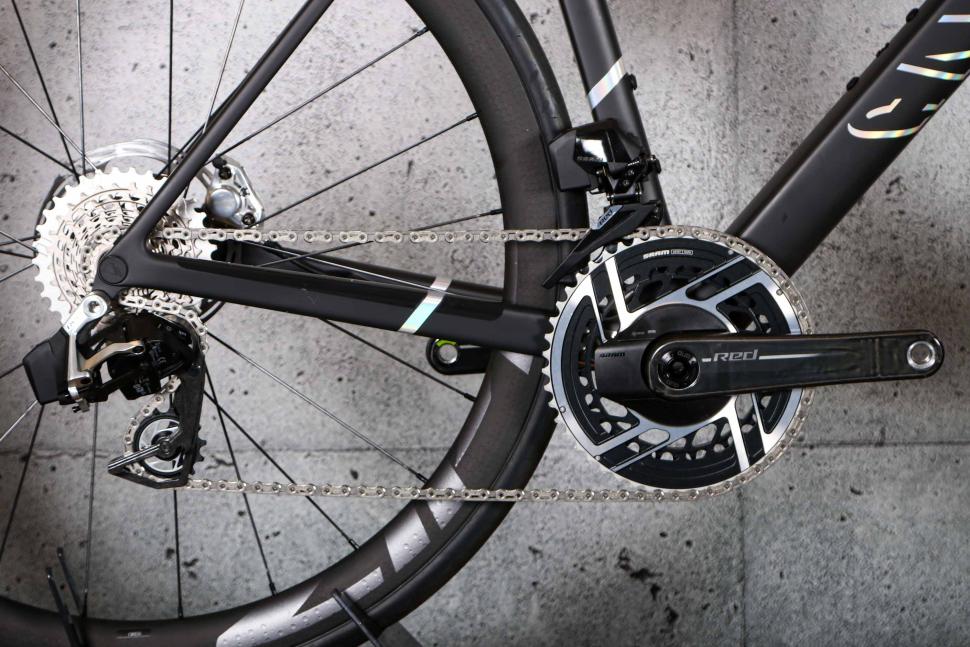
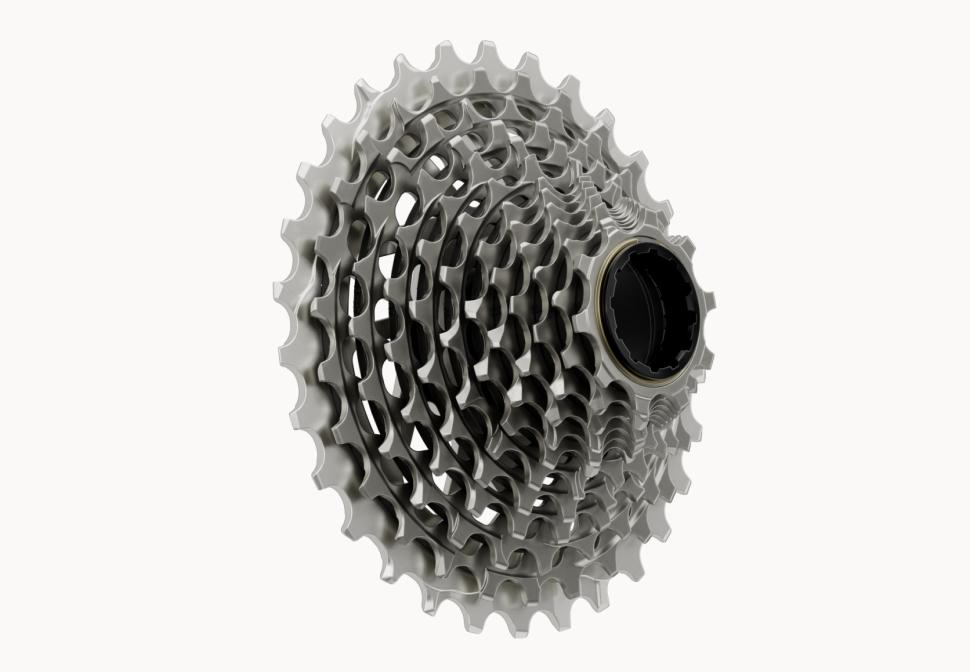
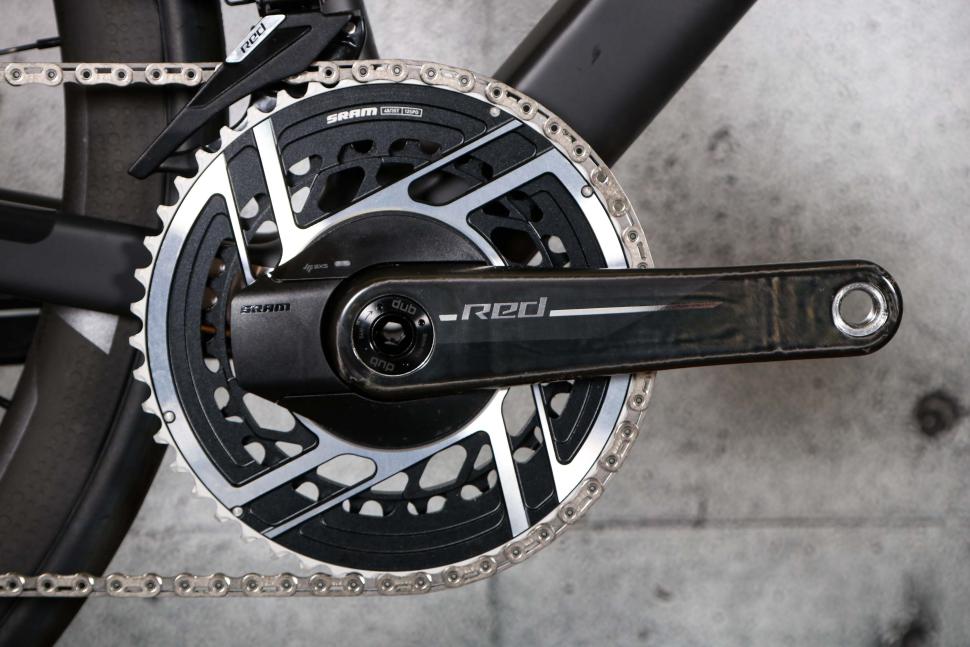
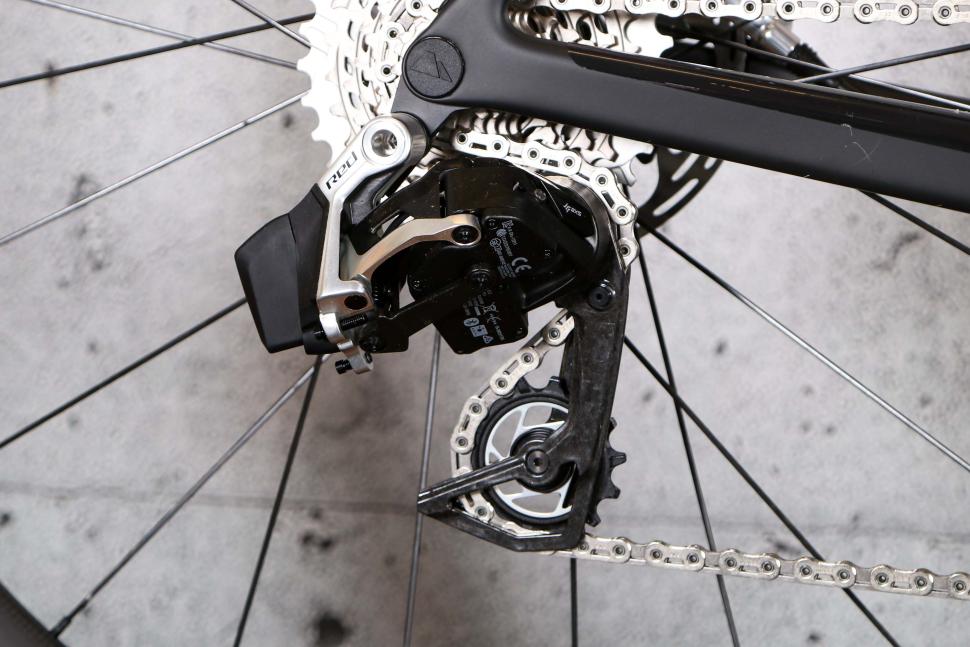
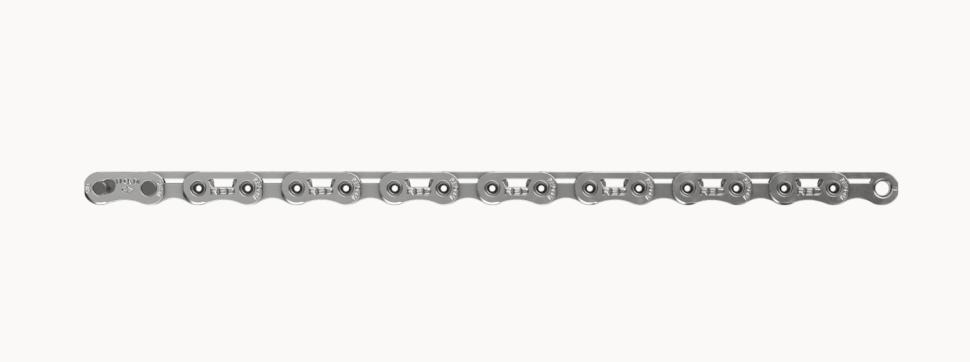
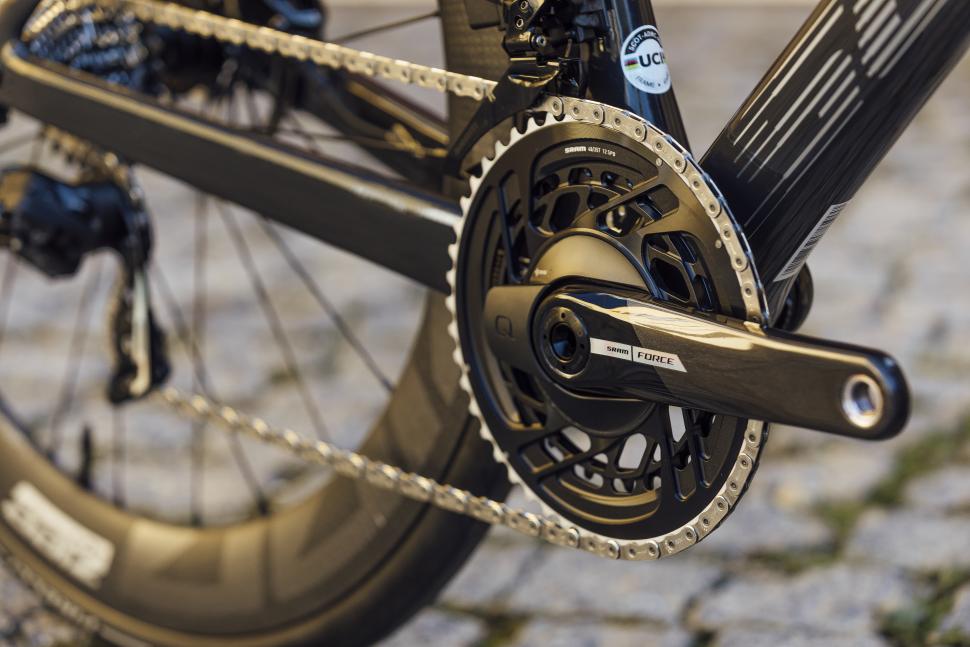
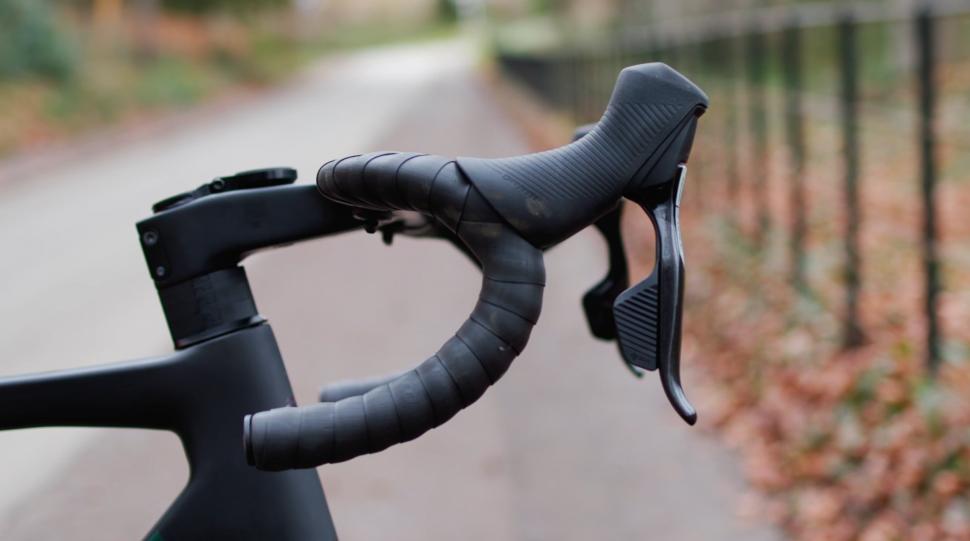
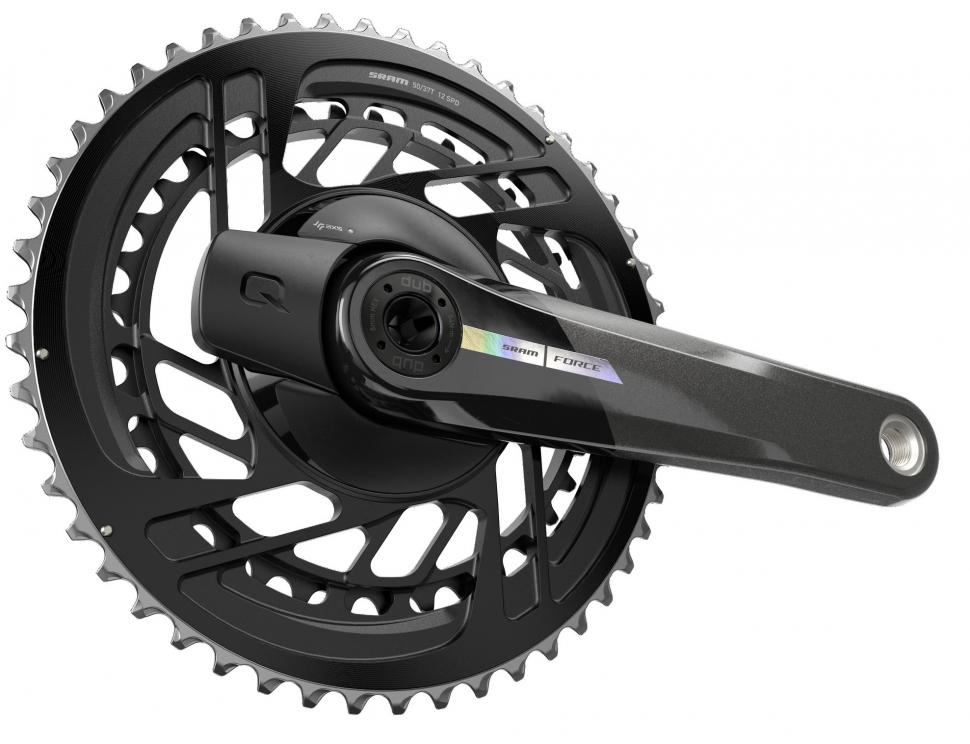
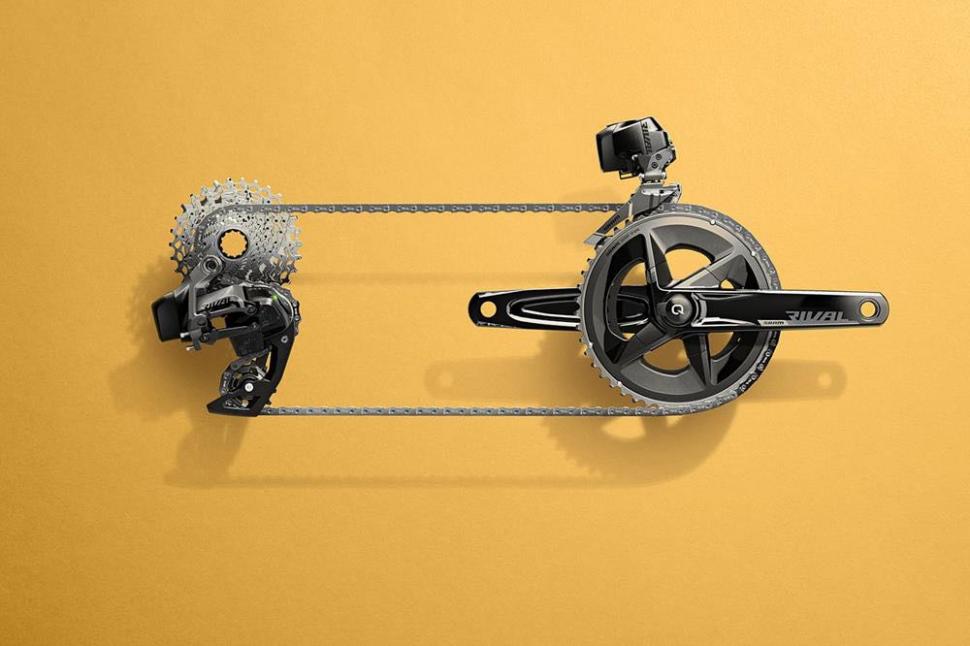
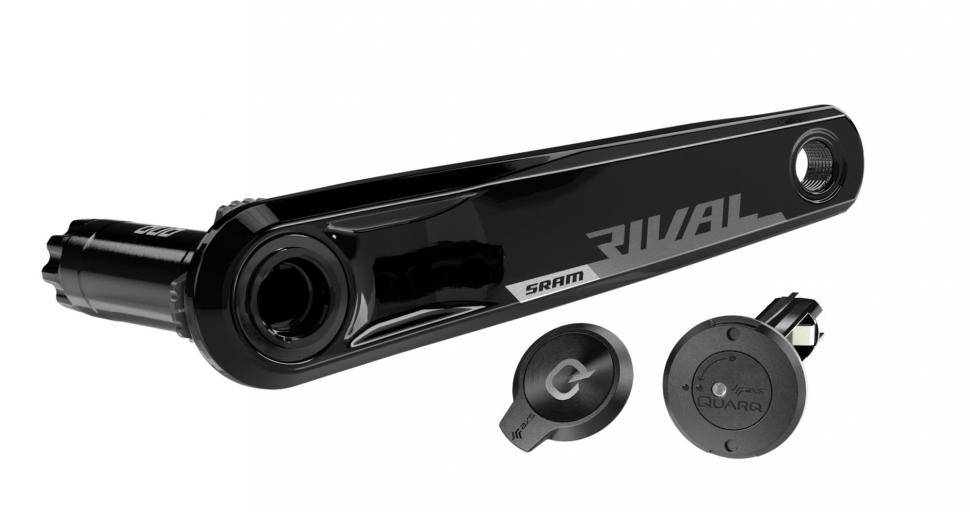
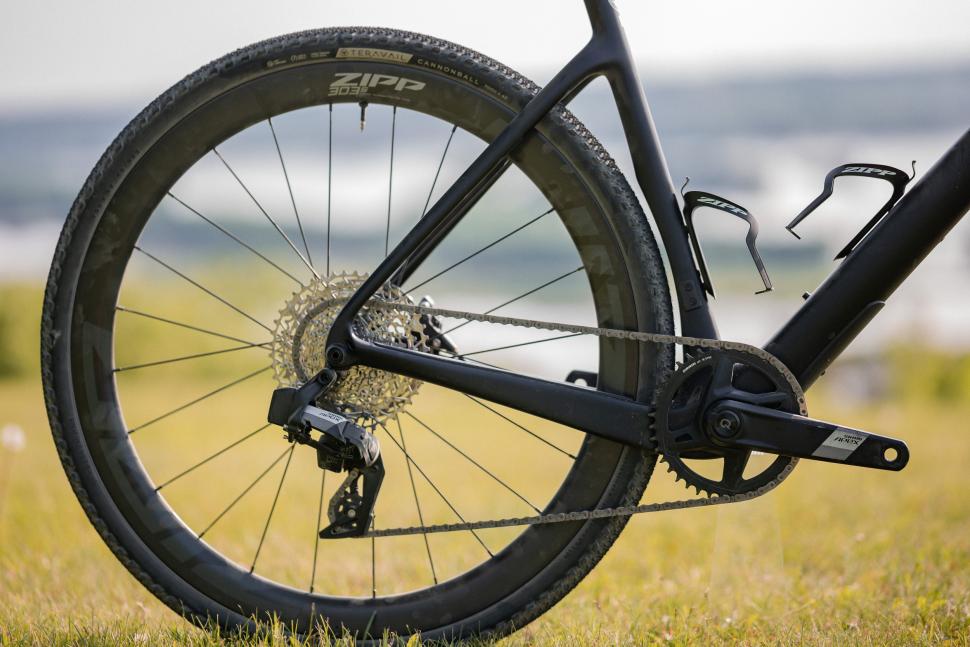

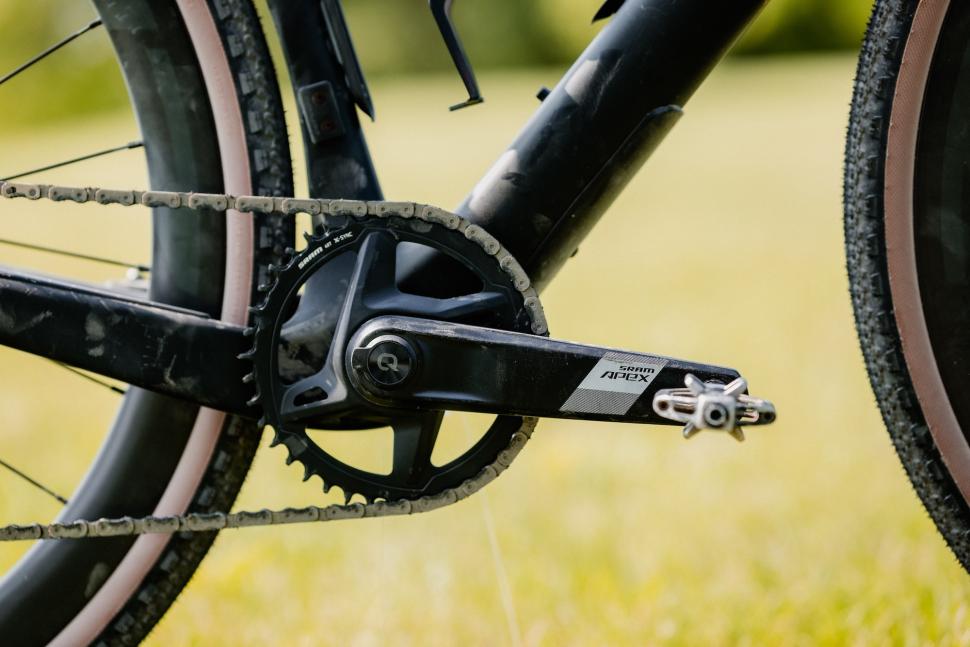
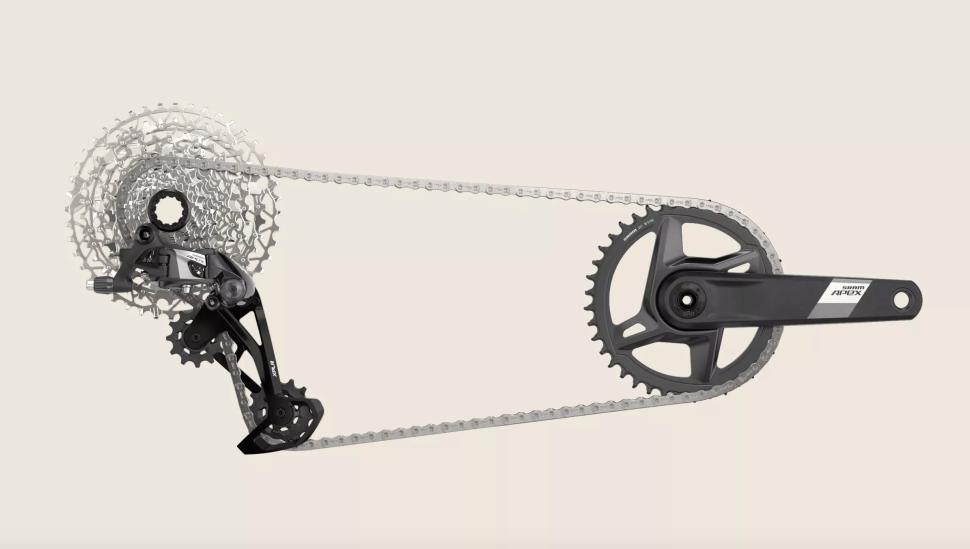
Add new comment
3 comments
Sram's entry level groupset is significantly more expensive than Shimano's - and you never see Sram on entry level bikes, unlike Shimano. Where is the Tiagra, Sora, Cues equivalent?
Changed to SRAM AXS (Force and Rival) about 5 years ago. When it works it is great but I have had 2 rear mechs, one front mech and a spider power meter fail - each one failing just out of the 2 year warranty period. Every issue seems to be a common one according to user forums.
There's also Apex xplr 1x12s Mechanical. Which has 11-44 HG and 10-44 XDR cassette options. IMHO the pick of the lot as no electronics.
Edit - article now includes this. 😍